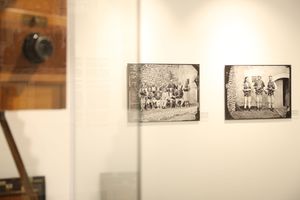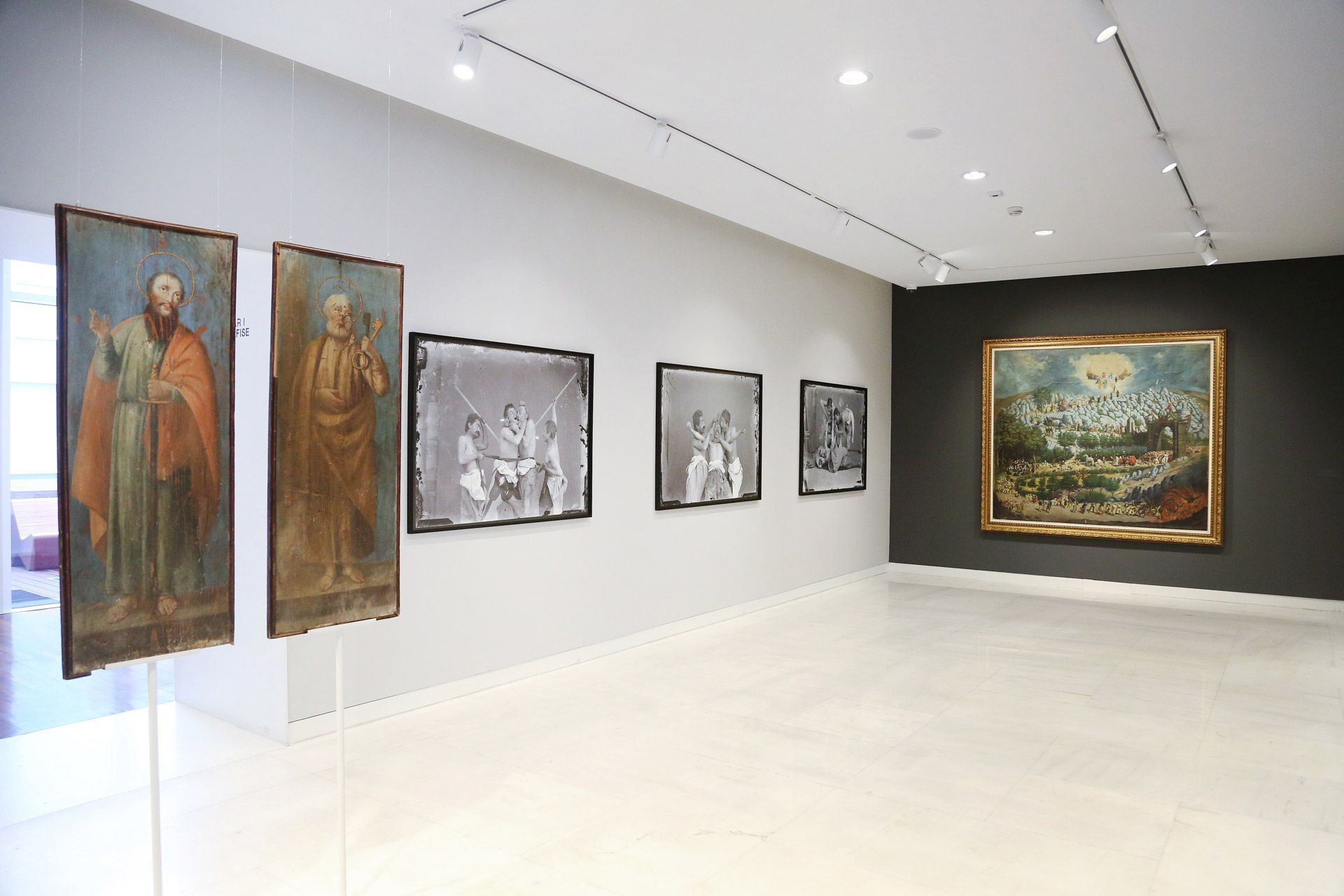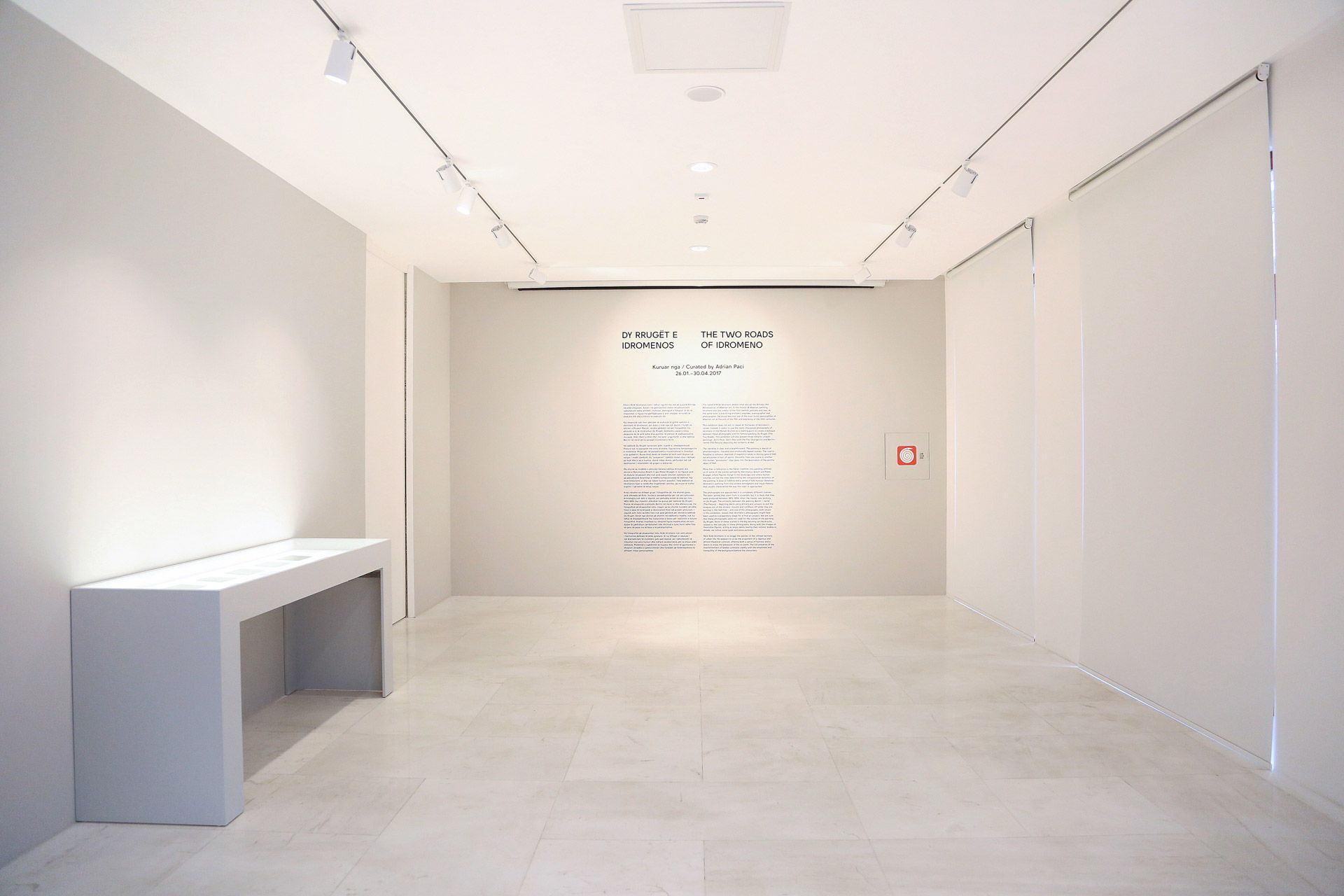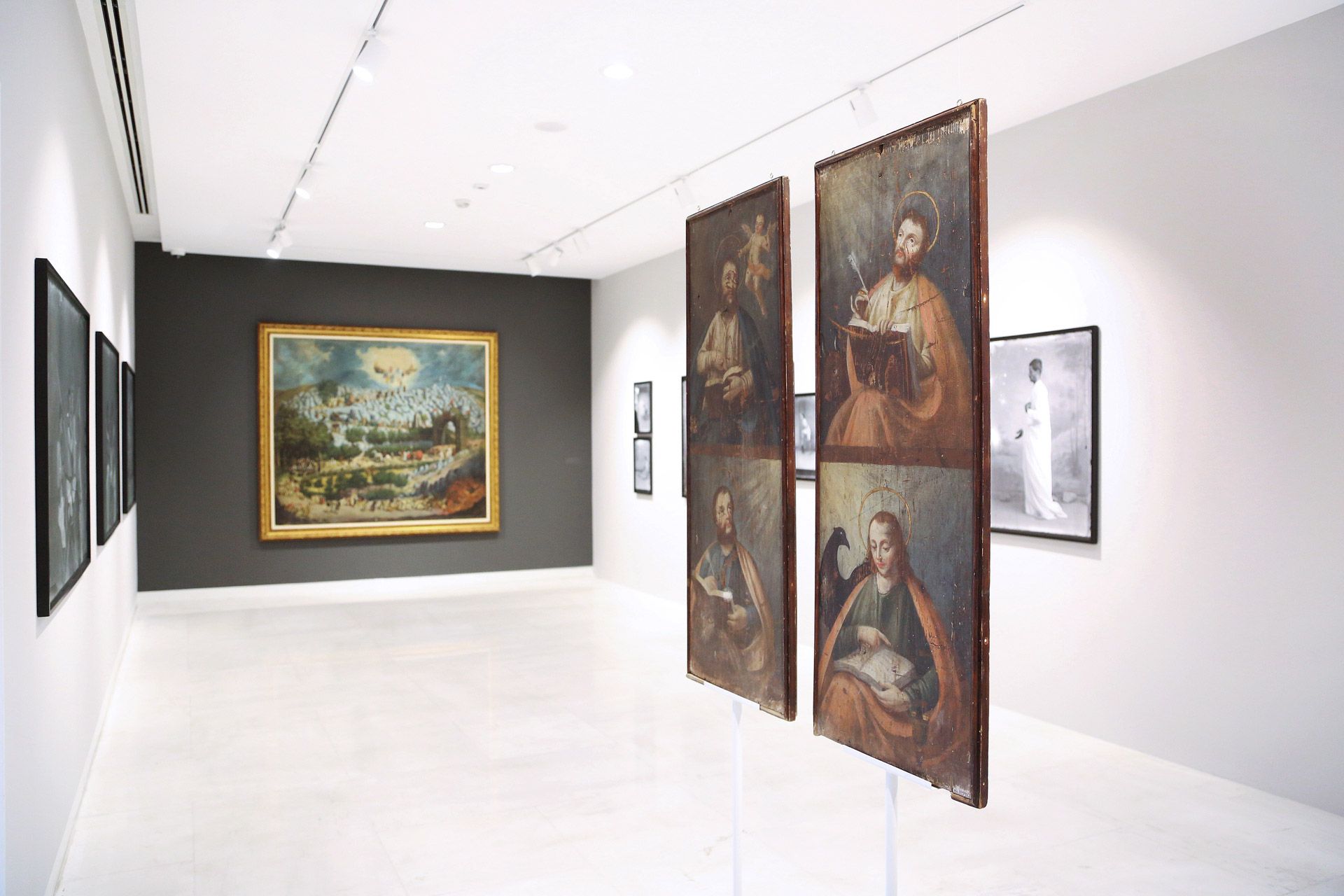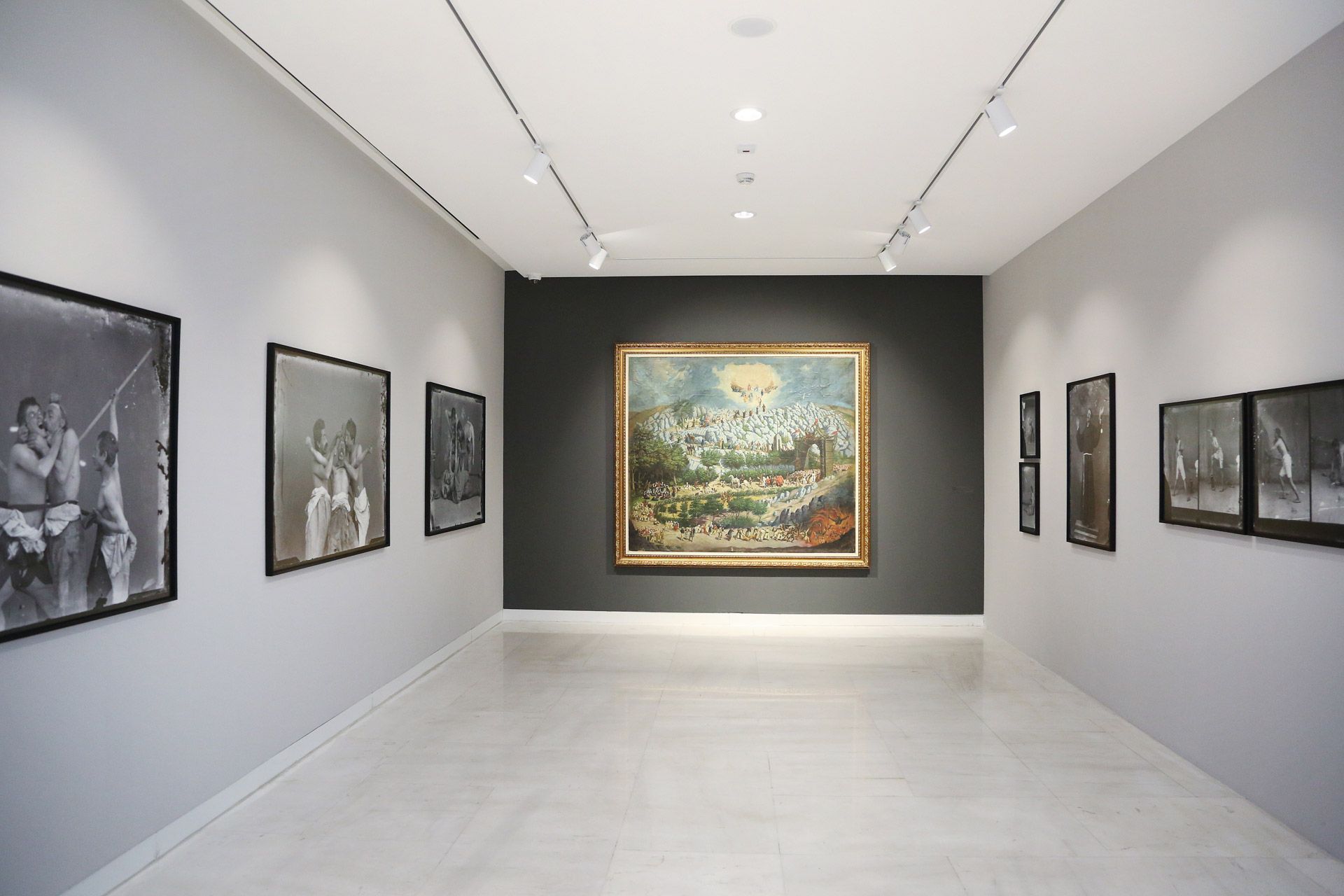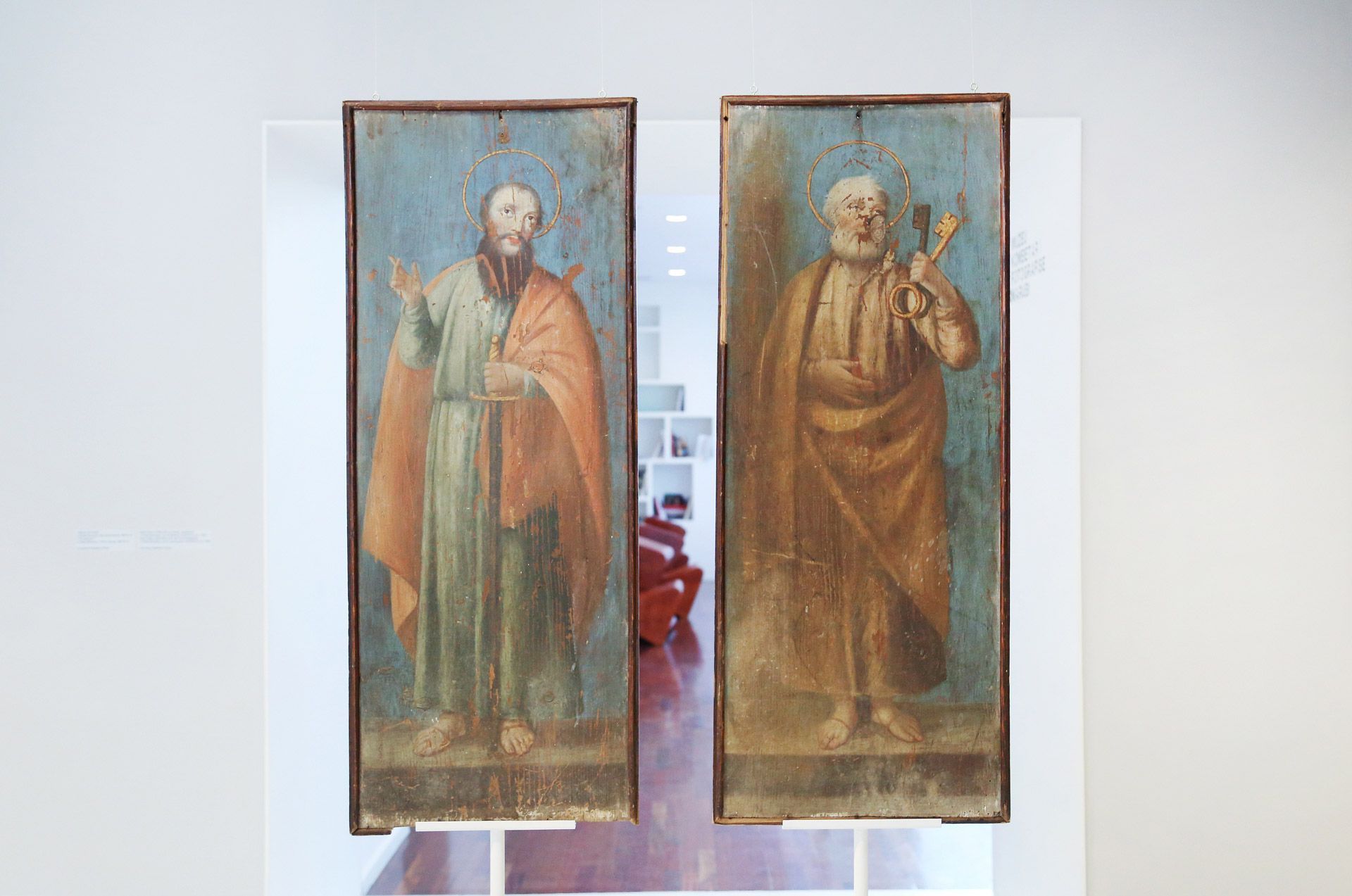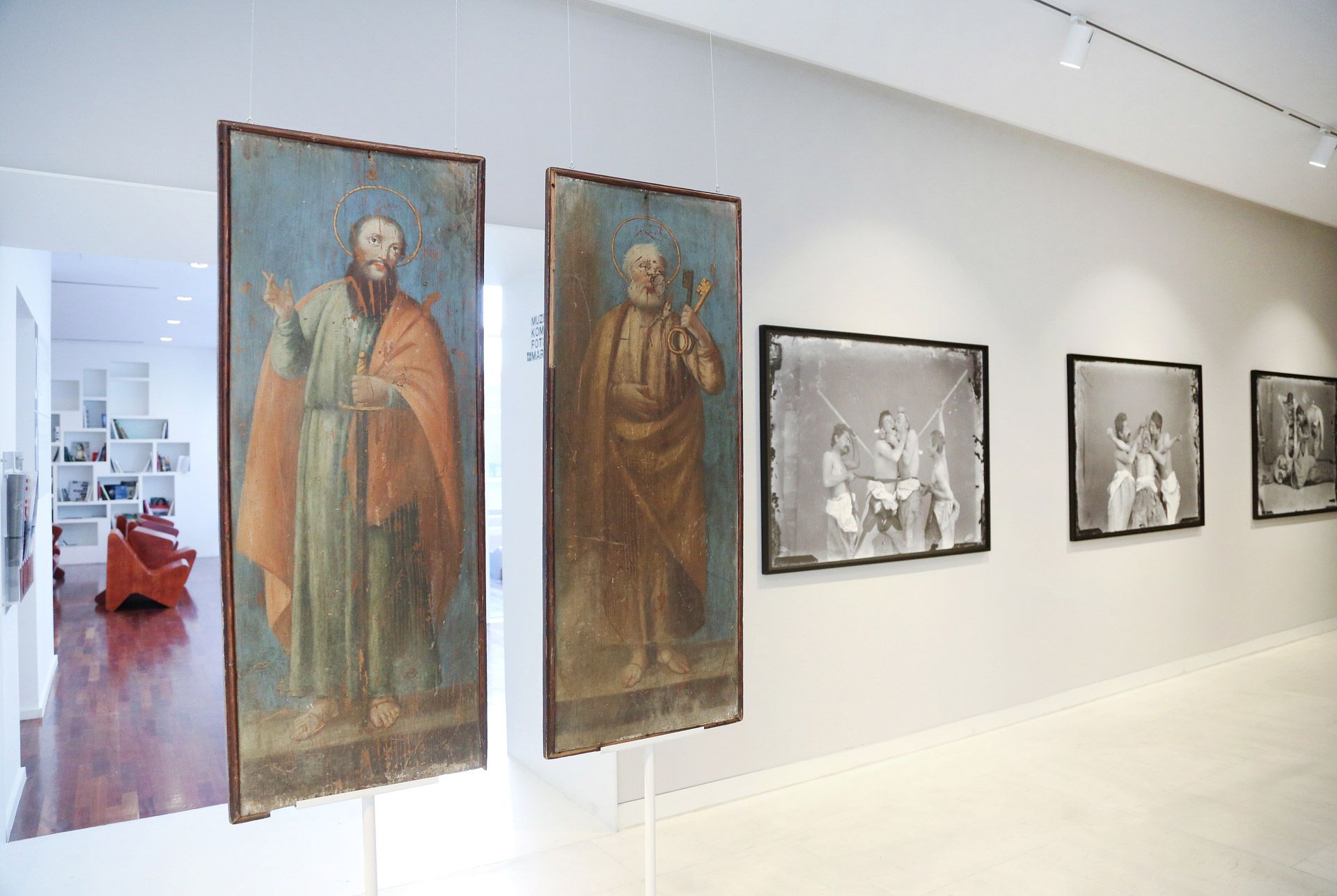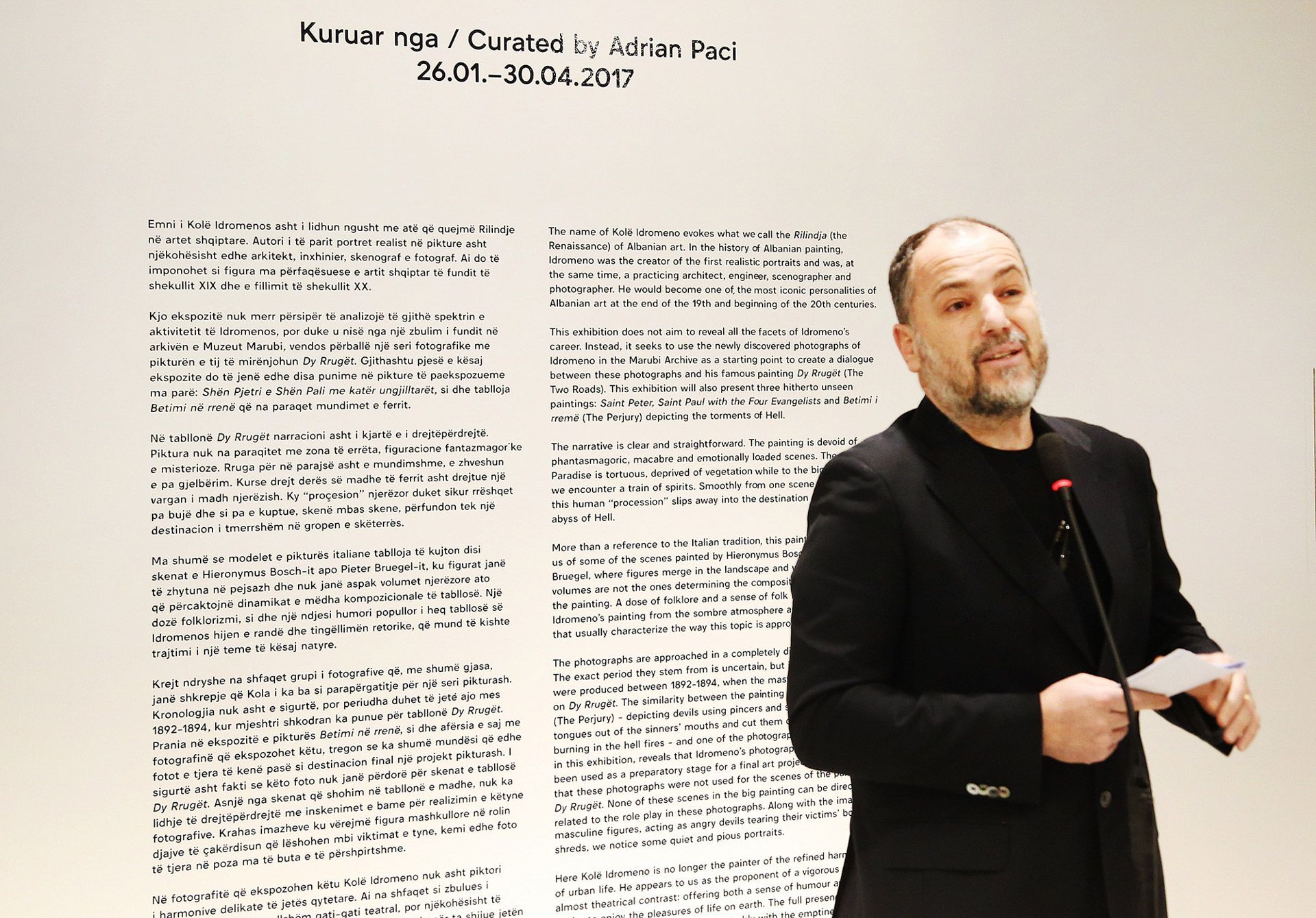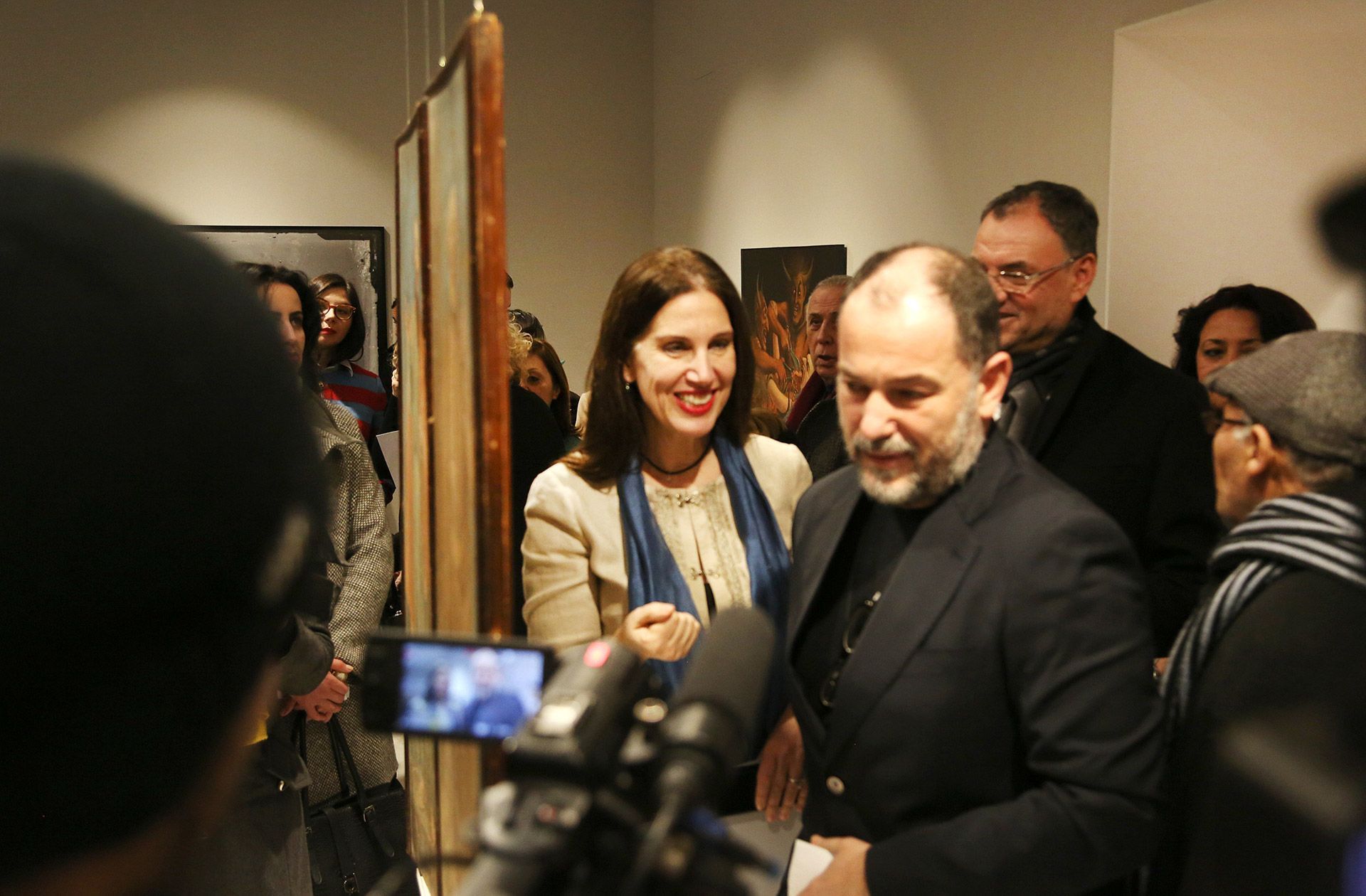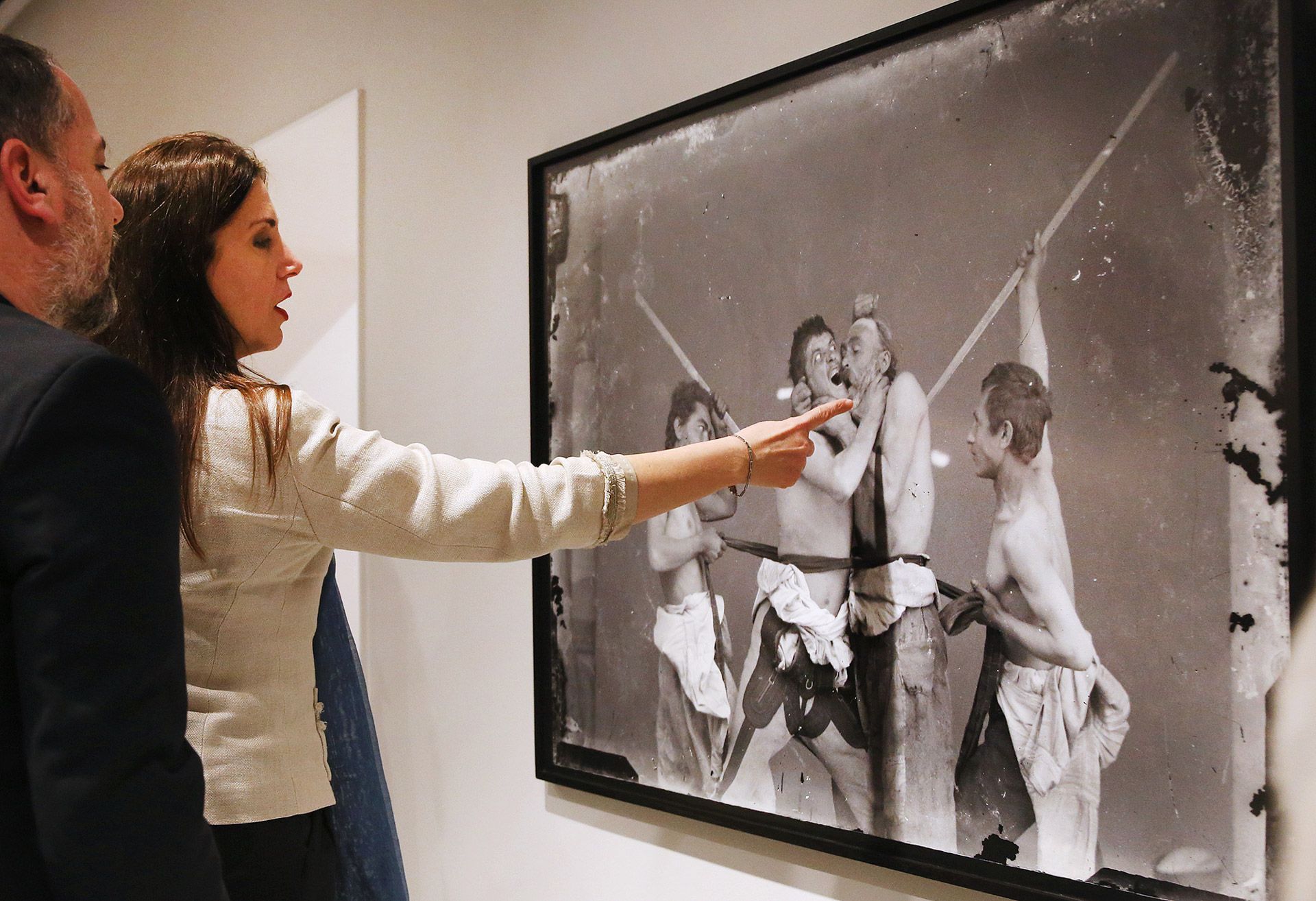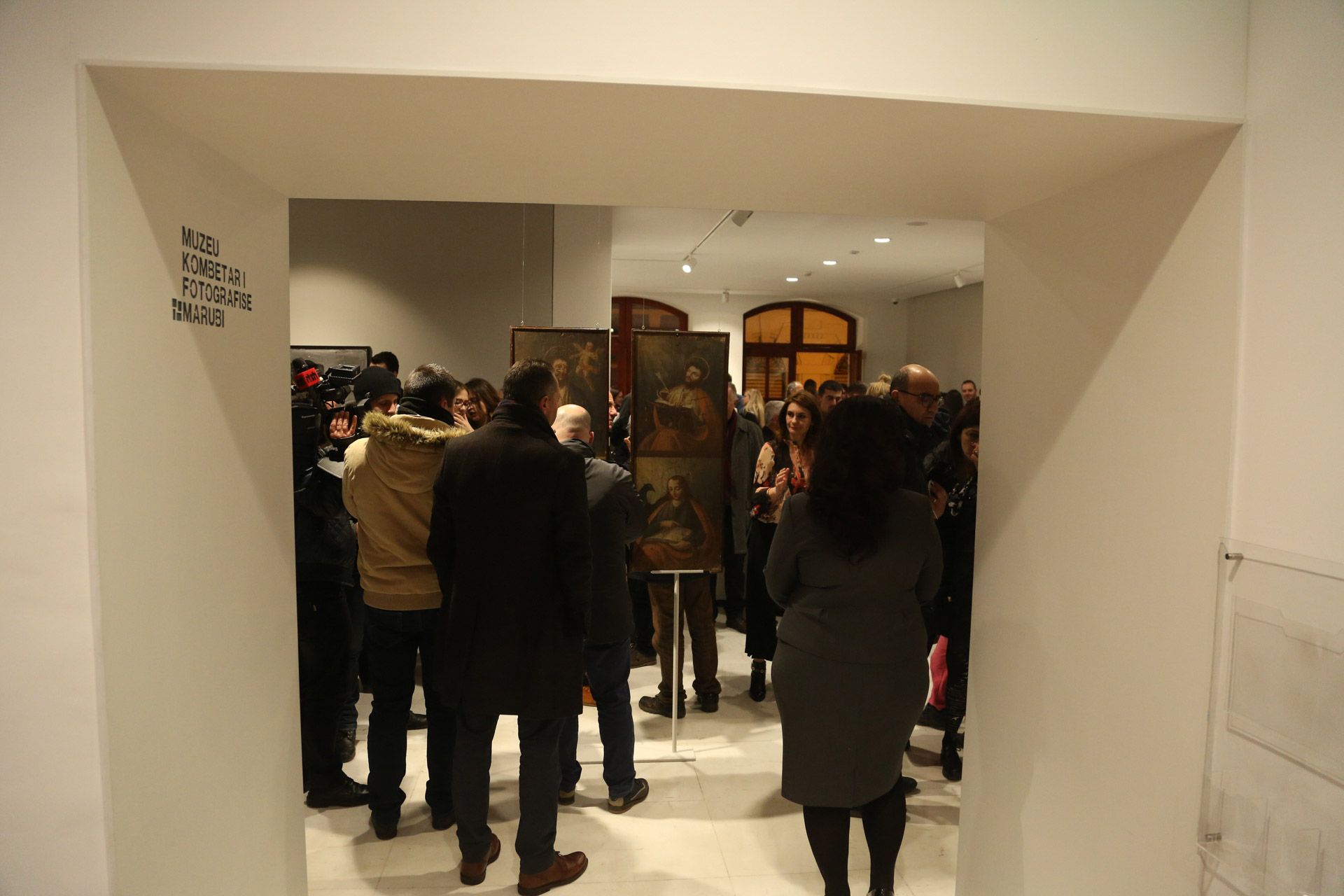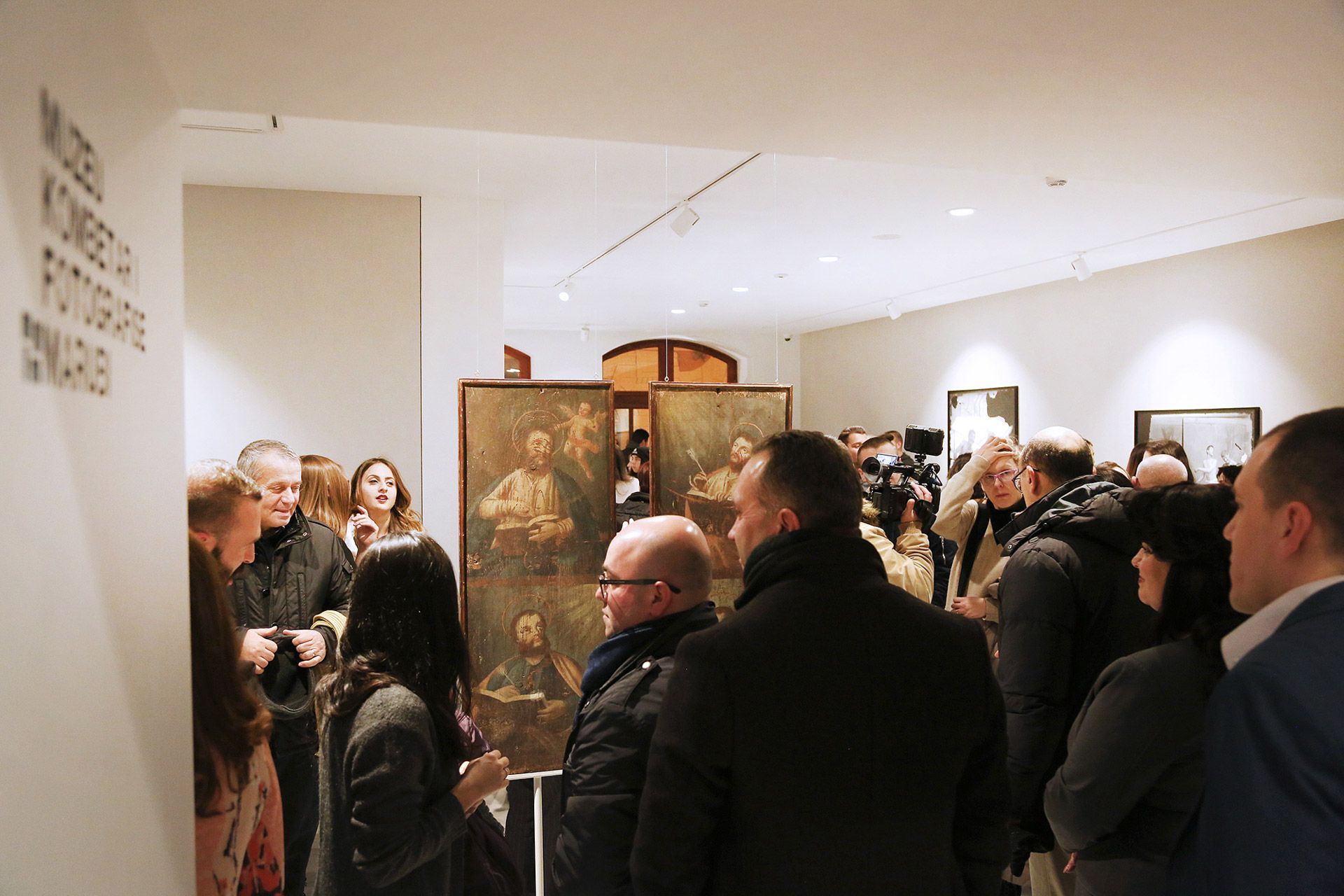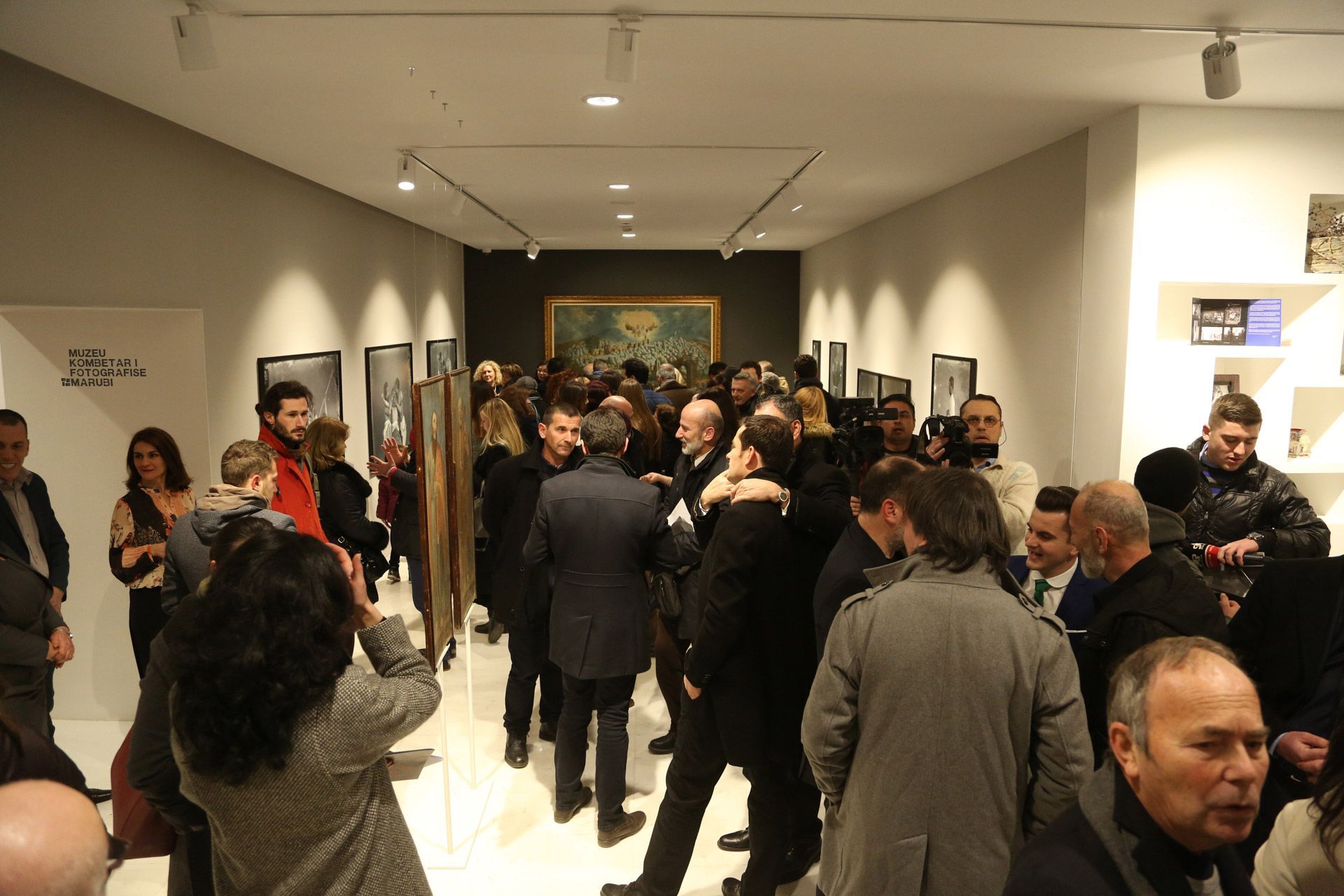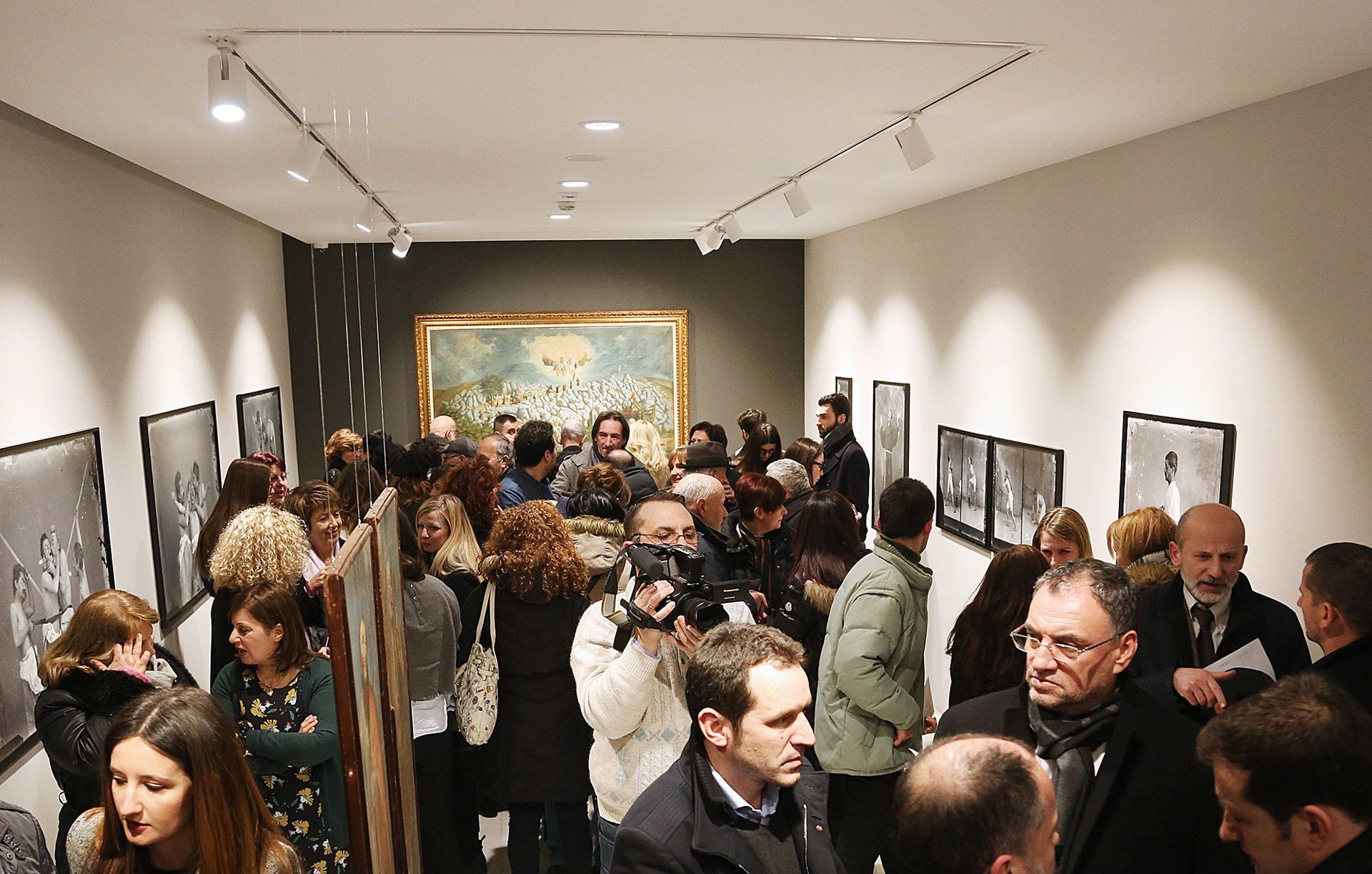The Two Roads of Idromeno
–
The name of Kolë Idromeno is closely related to what we call ‘Rilindje’ (‘Renaissance’), in Albanian art. In the history of Albanian painting he was the creator of the first realistic portrait and at the same time a practicing architect, engineer, photographer and scenographer.
Kolë Idromeno was a peculiar character, polyhedric and untutored, both an amateur and master in different fields, an innovator yet an implementer of established codes, he would become one of the most symbolic personalities in Albanian art of the end of the 19th and beginning of the 20th century.
This exhibition does not aim to analyze the wide spectrum of Idromeno’s career. Instead, it seeks to use the discovery of unknown photographs in the Marubi archive as a starting point to create a dialogue between these photographs and his famous painting *Dy Rrugët (The Two Roads)*. Part of this exhibition presents three hitherto unseen paintings: *Saint Peter, Saint Paul with the Four Evangelists* and another painting depicting the pains of hell.
In his painting *Dy Rrugët*, the narration is clear and straightforward and the same could be said for the moral of the story depicted. In the painting we do not find dark spaces, dramatic excesses and mysteriously phantasmagoric figures. On the one hand the path to Paradise is tortuous, deprived of vegetation, without tempting baits, and on the other hand on the path to the big gate of Hell we find a train of spirits. Smoothly from one scene to another this human “procession” slips away into the destination of the painful abyss of Hell.
More than a reference to the Italian tradition, this painting reminds us of some scenes from Hieronymus Bosch or Peter Brueghel, where figures are emerged in the landscape and where human volumes are not the ones determining the compositional dynamics of the painting. A dose of folklore and a sense of popular humor removes from Idromeno’s painting the obscure atmosphere and visual rhetoric that usually characterize the way this topic is treated.
The photographs are approached in a completely different manner. The exact period they originate from is uncertain, yet it could be estimated that they were produced between 1892-1894, when the master was working on *Dy Rrugët*. The similarity between the painting *Betimi në Rrenë (The Perjury)* – depicting devils using pincers and scissors to stick the tongue out of the sinner’s mouth and cut it off while he is burning in the infernal flames - and one of the photographs, both shown in this exhibition, proves that Idromeno’s photographs might have been used as a preparatory stage for a final project of paintings.
We are quite certain these photographs were not used to depict scenes from *Dy Rrugët*. None of the scenes we see in the big painting are directly related to the improvisation of these photographs. Along with the images of masculine figures, acting as angry devils tearing their victims’ bodies apart, we notice some quiet and pious portraits, such as a man wearing a monk robe with his hands opened to accept the Divine Providence or another character that seems to have taken the road to redemption.
There is an impressive expressiveness and a sense of bewilderment that can be found in the photographs as opposed to the paintings; it seems as though something has been lost from the power of the image through the use of the paint on canvas, the elaboration of colors, delineation of anatomy and the intentional deformation of figures. The photographic composition is rather direct and powerful; the composition of the photographic pose and the spontaneity of these street people - whom Idromeno asked to undress, provided them with some tools to hold and asked them to contort and twist their faces in front of the lens - have created some explosive areas expressed by the characters in the meeting point between fiction and the reality. Here Kolë Idromeno is not only the painter of the delicate harmonies of ordinary city life. He appears to us as the explorer of a vigorous and almost theatrical contrast: grasping both a sense of humor and yet a desire to enjoy terrestrial life. The fullness of the intertwinement of bodies is accompanied by the quiet emptiness of the background and backdrops that appear behind the characters.
Seeing such photographs by Kolë Idromeno we cannot help but be reminded of the conclusive scenes of torture from Pasolini’s *Salò*, or the *120 days of Sodom*. Pier Paolo Pasolini never saw the photographs taken by our Idromeno, but without any doubt he would have appreciated them a lot. The unification of classical symmetries - a rhythm of diagonal and horizontal lines harmonized in a perfect way tainted with the sudden roughness of the reality and complemented with the variety of the characters creates a strong connection between images from Idromeno and Pasolini’s poetics where we find an infinite amount of of classical references. Both Pasolini and Idromeno’s casts are composed of street people, not real actors but unquestionably transmitting to us their experience of living.
These underlying relations seem to tell us that art has its mysterious channels of communication and artists of all the times are not mere masters of a specific technique but they are the ones that cannot resist answering to the necessary visions which they encounter in their long and apprehensive research.
Publication

Exhibition Credits
- Curated by
Adrian Paci
- Acknowledgements
Municipality of Shkodër
National Center for the Inventory of Cultural Heritage, Tirana
Shkodra Historical Museum
Gjergj and Natalia Leqejza family
Adrian and Melisa Paci family
Genti Puka
Gjon Ulbani
Jozef Shiroka

